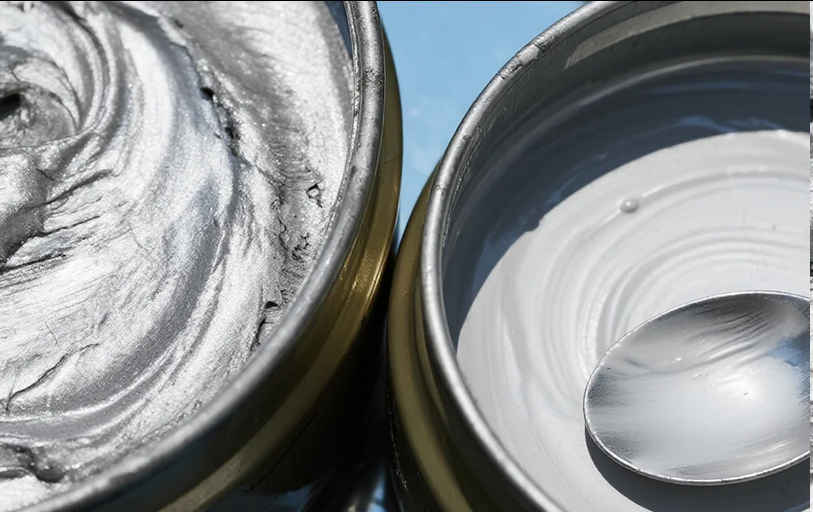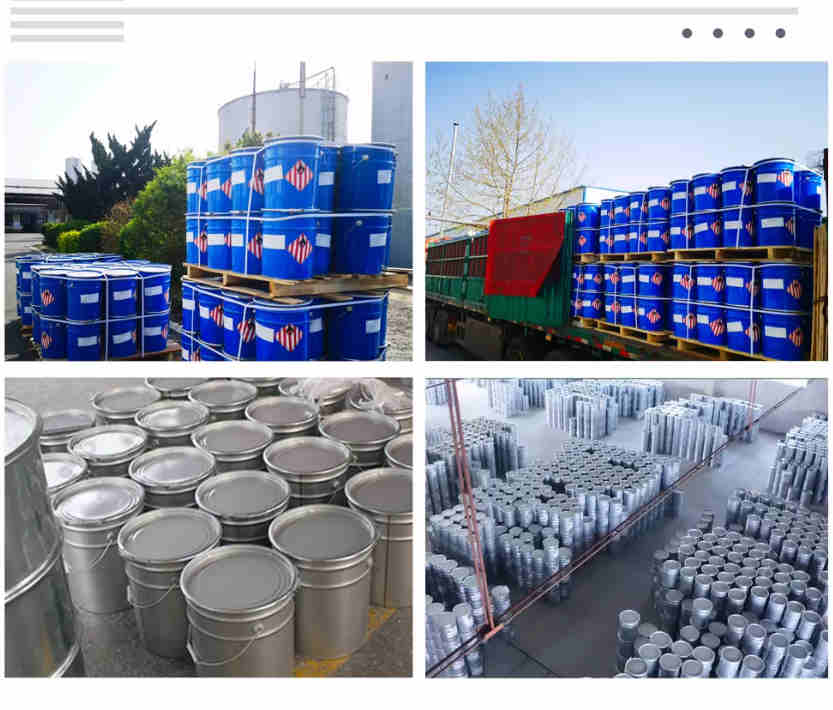Aluminum Paste Anti-Corrosion Coatings: Extending Metal Service Life
2025 / 11 / 01
Metal corrosion represents one of the most significant challenges facing industries worldwide, costing global economies billions annually in maintenance, repairs, and premature replacements. However, an effective solution exists in aluminum paste anti-corrosion coatings – a proven technology that significantly extends metal service life while providing exceptional protective properties.


Understanding How Aluminum Paste Fights Corrosion
Aluminum paste creates a remarkable barrier protection system through its unique flake structure. When properly formulated into coatings, the microscopic aluminum flakes arrange themselves in overlapping layers, creating what scientists call a "labyrinth effect." This structure presents a tortuous path that effectively blocks moisture, oxygen, and corrosive chemicals from reaching the metal substrate beneath.
The protective mechanism of aluminum paste operates on multiple levels. The aluminum flakes themselves are naturally corrosion-resistant due to the formation of a stable oxide layer on their surfaces. When incorporated into coatings, these flakes create a shield that is both physically robust and chemically inert. The leafing characteristics of certain aluminum paste grades cause the flakes to float to the coating surface, forming a continuous metallic barrier that reflects UV radiation and provides additional weather resistance.
Key Advantages of Aluminum Paste in Protective Coatings
Superior Barrier Properties
The overlapping flake structure in aluminum paste coatings creates significantly better barrier protection than conventional pigment systems. Laboratory tests demonstrate that properly formulated aluminum paste coatings can reduce moisture vapor transmission by up to 80% compared to non-metallic coatings of similar thickness. This exceptional barrier performance directly translates to extended protection for metal substrates in corrosive environments.
Excellent Weather Resistance
Aluminum paste provides natural resistance to ultraviolet radiation, helping coatings maintain their protective properties even after prolonged outdoor exposure. The reflective characteristics of the aluminum flakes reduce heat buildup in coated structures, minimizing thermal stress that can accelerate coating failure. This makes aluminum paste particularly valuable for applications requiring long-term weather resistance.
Temperature Stability
Unlike some organic pigments that degrade at elevated temperatures, aluminum paste maintains its protective properties across a wide temperature range. This thermal stability makes aluminum paste coatings suitable for applications involving heat cycling or elevated service temperatures, such as industrial equipment, exhaust systems, and processing facilities.
Applications Across Industries
Marine and Offshore Protection
The marine environment presents one of the most challenging corrosion scenarios, with constant exposure to saltwater, humidity, and UV radiation. Aluminum paste coatings have proven exceptionally effective in protecting ships, offshore platforms, docks, and coastal structures. The superior barrier properties prevent salt penetration while providing the durability needed to withstand mechanical abrasion and constant water exposure.
Industrial Infrastructure
From chemical plants to manufacturing facilities, aluminum paste coatings protect structural steel, storage tanks, piping, and equipment from industrial atmospheres and chemical exposure. The chemical resistance of these coatings makes them ideal for facilities where accidental spills or fumes might compromise conventional coating systems.
Automotive and Transportation
The automotive industry relies on aluminum paste coatings for underbody protection, chassis components, and other areas susceptible to corrosion from road salts, moisture, and environmental contaminants. The combination of corrosion protection and decorative appeal makes these coatings valuable for both functional and aesthetic applications.
Building and Construction
Architectural metals, structural steel, roofing, and exterior metalwork benefit significantly from the protective qualities of aluminum paste coatings. These coatings provide long-lasting protection against atmospheric corrosion while maintaining an attractive appearance that enhances building aesthetics.
Formulation Considerations for Optimal Performance
Resin System Compatibility
The effectiveness of aluminum paste in anti-corrosion applications depends heavily on proper formulation with compatible resin systems. Epoxy, polyurethane, and silicone-modified resins have demonstrated excellent performance when combined with aluminum paste, providing durable, chemically resistant films that maximize the protective qualities of the aluminum flakes.
Pigment Volume Concentration
Achieving the optimal pigment volume concentration (PVC) proves critical for aluminum paste coatings. Formulations must balance sufficient aluminum paste content to create an effective barrier while maintaining adequate resin content to ensure proper film formation and adhesion. Typically, aluminum paste coatings perform best at PVC levels below the critical pigment volume concentration (CPVC).
Application Parameters
Proper application ensures that aluminum paste coatings deliver their full protective potential. Surface preparation, film thickness, drying conditions, and application method all influence the final protective properties. Most aluminum paste coatings require minimum dry film thicknesses of 50-75 microns to achieve optimal barrier performance.
Performance Validation and Testing
Accelerated Testing Results
Standardized testing protocols consistently demonstrate the superior protective qualities of aluminum paste coatings. Salt spray testing according to ASTM B117 typically shows that well-formulated aluminum paste coatings can provide 1,000-2,000 hours of protection before the first signs of corrosion appear at the scribe.
Real-World Performance
Field experience confirms laboratory findings, with aluminum paste coatings regularly providing 10-15 years of maintenance-free protection in moderately corrosive environments. In severe marine or industrial applications, these coatings typically deliver 5-8 years of reliable protection before requiring maintenance.
Economic Benefits and Lifecycle Advantages
The initial cost of high-performance aluminum paste coatings is often offset by significantly reduced maintenance requirements and extended service life. Lifecycle cost analyses consistently show that the long-term economic benefits of aluminum paste coatings make them a cost-effective choice for corrosion protection, particularly in applications where maintenance access is difficult or shutdown costs are substantial.
Environmental and Regulatory Considerations
Modern aluminum paste coatings have evolved to meet increasingly stringent environmental regulations. Water-based and high-solids formulations now provide excellent corrosion protection while complying with VOC limitations and other environmental requirements. These advancements make aluminum paste coatings suitable for use in regions with strict environmental regulations.
Future Developments and Trends
The continuing evolution of aluminum paste technology focuses on enhancing performance while addressing environmental concerns. Ongoing research includes developing more efficient flake geometries, improved surface treatments, and advanced formulation techniques that further extend the protective capabilities of aluminum paste coatings. The integration of smart technologies and self-healing mechanisms represents the next frontier in corrosion protection using aluminum-based systems.
Conclusion
Aluminum paste anti-corrosion coatings offer a proven, reliable solution for extending metal service life across diverse applications and environments. Their unique combination of barrier protection, weather resistance, and durability makes them an excellent choice for protecting valuable metal assets against corrosion. As formulation technology advances and performance standards increase, aluminum paste coatings continue to demonstrate their value as a cornerstone technology in the ongoing battle against metal degradation.
For engineers, specifiers, and maintenance professionals seeking cost-effective, long-term corrosion protection, aluminum paste coatings represent a time-tested solution that delivers consistent results and excellent return on investment through extended service life and reduced maintenance requirements.

